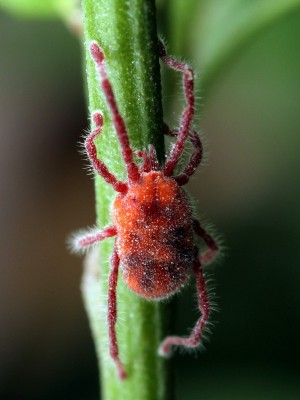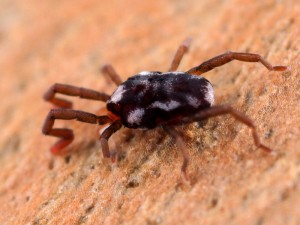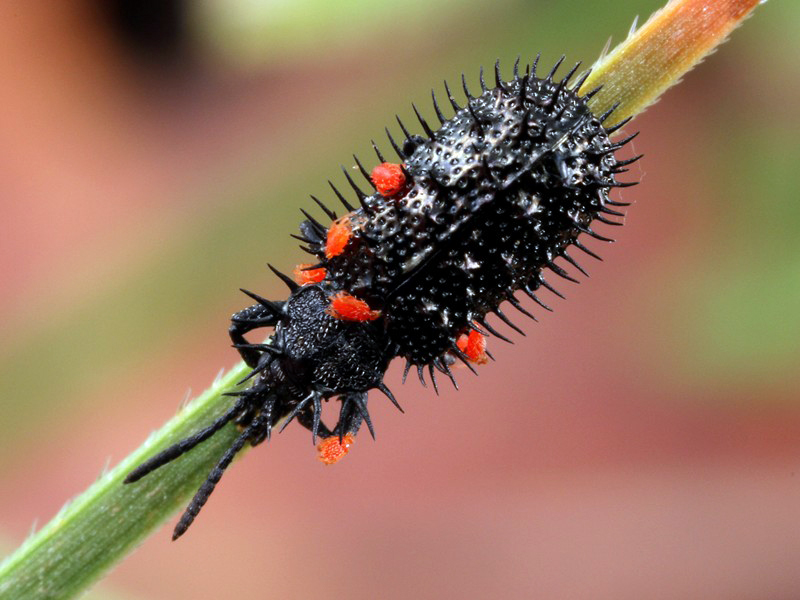Order Acarina (or Acari)

Mites and their unpopular cousins, ticks, are a group of invertebrates that are generally found at the smaller end of the scale and are, therefore, rarely noticed. As with some of the other invertebrates, their reputations are tarnished by the destructive nature of a handful of species. Ticks are renowned for attaching themselves to us and our pets and becoming potentially life-threatening. I have come back from a few trips in the bush with these unwelcome passengers lodged in my skin and they are not easy to remove (ironically, I have never taken a picture of one). Some mites are known to be agricultural pests and can infest livestock and poultry in massive numbers, and some are capable of transmitting diseases such as scrub typhus in humans. But generally speaking, most mites are secretive creatures that prefer to live in the shadows and go about their lives mostly unseen.
There can be a great deal of variety amongst mites and ticks, but they all have four pairs of legs in their adult form (some have only three pairs in their juvenile stages) and they only have a single body segment, unlike spiders, which have two, and insects, which have three. Their other distinguishing feature is that they lack antennae.

around on a tree trunk.
The young hatch from eggs that are usually layed in the soil or leaf litter and they moult several times before becoming a full adult. The transition from three pairs of legs to four pairs usually occurs after the first moult.
While ticks have evolved to become blood-suckers, mites have taken on a variety of diets, from feeding on plant sap to preying on other small invertebrates and in some cases becoming parasites, feeding on the blood, skin or feathers of their host.
Mites and ticks can be found in a wide variety of habitats in Australia, both on land and in the water, but most prefer to live amongst the leaf litter or under bark, going about their business largely unnoticed.
~~~~~
Click here to see the Mite photo galleries
~~~~~
